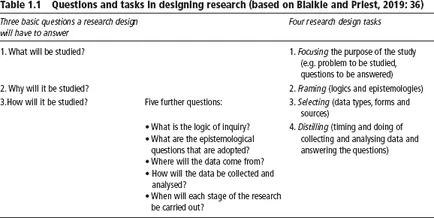Introduction
Designing qualitative research and the term ‘research design’ both have a varied history in qualitative research. Publications about qualitative research design have come up from time to time. Sometimes they provide elucidating concepts and details on this topic, sometimes they are broader in focus and more about specific methods than about design itself. In some contexts, the use of this term and idea have been rejected or attributed to quantitative research, and integrated textbooks of qualitative and quantitative research have dealt with the term ‘design’ for quantitative research only.
Although qualitative research has advanced in recent decades, it is at a crossroad in several respects. On the one hand, qualitative research has undergone a proliferation in many ways. It has established itself in a wide range of disciplines beyond the original disciplines like sociology, anthropology and education. We find qualitative research now also in fields like nursing, medicine, social work, psychology, information science, political sciences and the like. Even if in many of these disciplines qualitative research is not the mainstream of research and not at the core of methods training or teaching in general, on-going research increasingly includes qualitative studies.
These developments have led to an interesting gap: we can note a variety of methods and approaches for collecting and analysing data that have been developed and spelled out in the methodology literature mainly in the original disciplines. The range is from various types of interviews to narratives and from focus groups to collecting visual and virtual or digital data. These are analysed with coding and interpretation, conversation, narrative and discourse analysis for example. However, experience with reviewing articles and PhDs and other theses from various disciplines shows how often the designing of qualitative research is done more or less ‘hands-on’ both in the original and in the other disciplines: researchers sometimes ‘just do it’ (to use a phrase of Barney Glaser (1992)). The studies are pursued with a sometimes rather rough understanding of interviewing, or a rather general and unstructured concept of ethnography is applied, before one or the other way of analysing the data is used.
Qualitative research has undergone another major proliferation over the last 20 years concerning the types of data that are produced and used. Data from observations, interviews and focus groups are traditional data types, which now are complemented by visual, virtual, textual, digital, secondary and other data. These types of data represent the diversification of ways of communicating and documenting individual and social experiences. At the same time, methods for producing and analysing these data have proliferated as well, and new devices for recording activities and processes in their complexity have been developed. Videotaping, acoustic-recording devices and Internet formats like Facebook, etc. are ready to catch relevant aspects of the current life worlds.
On the other hand, in many of the fields and disciplines mentioned above, qualitative research is facing or is threatened by a backlash in appreciation of qualitative studies and their outcomes. This may have political and discipline-specific reasons but may also be a general problem of ‘marketing’ the seriousness of qualitative research and its findings. Qualitative research focuses the threat of being seen as systematically designed only if it is part of mixed methods approaches. And finally, qualitative research – as other forms of social research – is challenged on an epistemological level in discussions of decolonizing social sciences and current debates of identity politics.
All in all, this means that there is a gap between the developments of methods, the variety of data that are used and the research practice on the one side and the (limits of) perception of the research being planned and pursued systematically and reflexively enough on the other side. This gap results from the lack of a systematic and comparative discussion based on an overview and stocktaking of the challenges and suggestions for how to plan and design qualitative research in a more systematic and convincing way for producing results that are perceived, received and used in wider publics.
Against the backgrounds of these developments, for researchers turning to new research issues and to new types of data, but also graduates turning to qualitative research for their own independent projects, a more systematic reflection of the state of the art of what is and what can be done in designing qualitative research may be helpful.
All of this means that it is time to set the agenda in respect to designing qualitative research in two ways: (1) to see designing qualitative research as a means to set the agenda for a concrete study – what to study, how to study it, and using empirical approaches to which individuals, groups, situations or materials, with which types of data and with which kinds of aims in mind, while also considering outcomes and impacts; (2) to set the agenda for spelling out and reflecting designs and designing in qualitative research in a more systematic way.
Designing Qualitative Research – Some Core Assumptions
The discussion about how to design qualitative research has been limited so far. Some of the more general discussions about research designs do not focus on qualitative research but include some contributions, which can be instructive for our context. So, we will first address the issue of research design more generally before we turn to designing qualitative research again.
What is Research Design?
Bryman (2012: 46) emphasizes that a research design ‘provides a framework for the collection and analysis of data. A choice of research design reflects decisions about the priority being given to a range of dimensions of the research process'. Central to such a concept is the role of causal connections between variables, generalization beyond the study group, but also ‘understanding behaviour and the meaning of that behaviour in its specific social context'.
Research Designs or Designing Research?
We find two approaches to the topic of research design in the literature about social research methods. The first approach is a more static one, which can be linked to discussions about existing research designs to choose from for one's own study. The second is a more process-oriented approach focusing on how to plan the research, in constructing the design of a study and, for specific circumstances, target group methods, data and impact, for which the design of the study should be appropriate.
Existing Designs to Choose
As Bryman's earlier quote shows, the idea behind research designs is often ‘the choice of research design', which means there is a number of (basic) designs available to choose from. For quantitative research, Krasaka (2010), for example, discusses experimental, quasi-experimental, nonrandomized control group, pretest–posttest or survey designs. These are treated as rather clearly delimited and distinguishable designs, which are established and selected by researchers according to their research questions or (other) preferences. Mostly, they are not necessarily linked to specific methodological strategies. Nonrandomized control group designs, for example, can be used in various contexts, such as medical research or educational studies, and the measurements applied in this form of design depend on the context and the subject of research. Survey designs are more closely linked to a specific form of data collection (a survey) but mainly define sampling strategies and the construction of study groups.
Russell Bernard (2012) complements this picture in three ways. In his introduction to qualitative and quantitative approaches to social research methods, the chapter on research designs discusses a number of distinct designs. However, first, these designs are all quantitative designs; the idea of designing qualitative research is not mentioned. Second, the role of designs is discussed mainly for experiments and experimental thinking (2012: 90). And third, the role of designs is seen as to control for threats to validity. This specific view of research designs has been a quite prominent one in the literature about social research methods, whether focused on quantitative methods or on both types of research.
Designing Research as Setting up a Plan for a Study
In distinction from such a static understanding of a toolbox of research designs from which to choose one, Ragin and Amoroso (2019) define the term ‘research design’ in a way that is more oriented on process and planning: ‘research design is a plan for collecting and analyzing evidence that will make it possible for the investigator to answer whatever questions he or she has posed’ (2019: 211). At the same time, they emphasize that research design is more than controlling the influences that might bias the findings of a study: ‘[t]he design of an investigation touches almost all aspects of the research, from the minute details of data collection to the selection of the techniques of data analysis’ (2019: 211). Blaikie and Priest (2019) discuss designing research for the general context of social research. They suggest a framework that can be helpful for our conceptualization of designing qualitative research (see Table 1.1).
For Blaikie and Priest (2019: 36), a research design will have to answer three basic questions. What will be studied? Why will it be studied? How will it be studied? For the last question, they specify five further questions. What is the logic of the inquiry? What are the epistemological questions that are adopted? Where will the data come from? How will the data be collected and analysed? When will each stage of the research be carried o...

